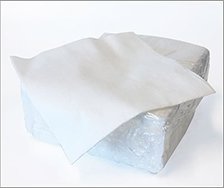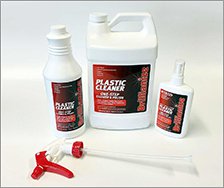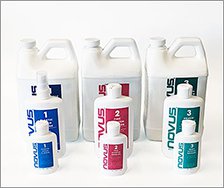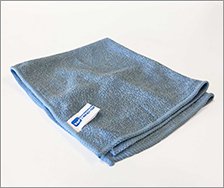TAP Article: How to Clean Plexiglass
How to Clean PlexiglassWhether used for commercial glazing or residential windows, acrylic (also known as Plexiglass) offers many advantages over glass. Though the two may share a similar appearance, acrylic is more clear than regular glass and is only half the weight yet 17 times more resistant to impact than traditional plate glass. Acrylic is also easy for TAP Plastics to cut to size for use in a wide variety of applications around the home, office, and workplace. You can easily maintain that prized transparency if you know how to clean acrylic properly. In this guide, we will walk you through the process of cleaning acrylic so that you can keep your acrylic surfaces in excellent condition.

One drawback to acrylic is that it’s prone to abrasion, which means that you need to take special care when cleaning your aquarium, framed artwork, or windows. Before you begin, you should also figure out what type of cleaner and cloth to use on your acrylic to remove dirt, dust, and smudges without marking up the surface. Just follow these tips!
• Dirt Levels: Take a close look at the acrylic to judge how dirty it is. This will help you determine how strong of a cleaning solution you need to use. Is there nothing more than a coat of dust? You can use a spray bottle with water to wipe the acrylic down. Tough stains and streaks may call for a homemade solution of water combined with a non-abrasive cleaning agent. However, there are certain cleaners you want to avoid.
• Cleaners to Avoid: Avoid any cleaning products that contain alcohol, ammonia, aromatics, and other abrasives. Alcohol can cause cracks and microfractures in the surface of the acrylic. Ammonia can eat into the surface of acrylic and leave it looking cloudy. Most grades of acrylic are susceptible to chemical attack from aromatic hydrocarbons. Acrylic will even dissolve inorganic compounds such as acetone, benzene, or toluene. You should also stay clear of traditional glass cleaners, halogens, and ketones.
• Scratches: As you already know, acrylic sheeting is prone to scratching, which means there’s a good chance that your plexiglass windows or surfaces may already be scratched. Not to worry, using some car wax, you can safely remove light surface scratches by temporarily filling in the scratch. Vaseline will achieve the same effect.
TAP has a video on removing scratches with our Novus system.
Light Cleaning vs. Heavy-Duty Cleaning
Even where there is nothing more than a light coating of dust, you still need to take special care when cleaning acrylic surfaces. Use a soft, clean cloth that’s made of a non-abrasive material. Wet the cloth before you start cleaning and keep wetting the fabric and acrylic to ensure that you aren’t transferring dirt, dust, and other debris to other areas of the acrylic.
When it comes to tough messes, you will want to soak the clean cloth in water and then add a non-abrasive cleaning agent (like dish soap) to the fabric. Clean the acrylic, turning the cloth often and adding more cleaner as needed. Rinse dirt from the cloth before adding more cleaner to prevent smudging or scratching. When you are nearly done, take another clean cloth, soak it in water, wring it out, and wash off the solution. Double check for any smudges before you pack up your supplies!

In high-traffic areas or outdoor applications, acrylic glazing and windows will require a little bit more elbow grease and heavy-duty cleaners. You will need a blow dryer or compressed air, a lint-free microfiber cloth, and a gentle acrylic cleaning agent, such as Brillianize or Novus #1. First, you will need to remove any excess dirt or dust from the acrylic surface. However, you do not want to make any dry contact with the surface, because you can grind those particles into the material. Instead, use a blow dryer at its coldest setting or any compressed air to clear the surface. Hold the air blower at a 45-degree angle several inches away from the acrylic, moving side-to-side and down the surface. The same method can be used with a spray bottle and water.


With these restrictions and tips in mind as well as a relatively simple cleaning regimen, you should be able to keep any acrylic surface spotless for years to come. If you have any questions about this guide to cleaning plexiglass or would like to learn more about the acrylic selection available at TAP Plastics, please feel free to contact us today.
